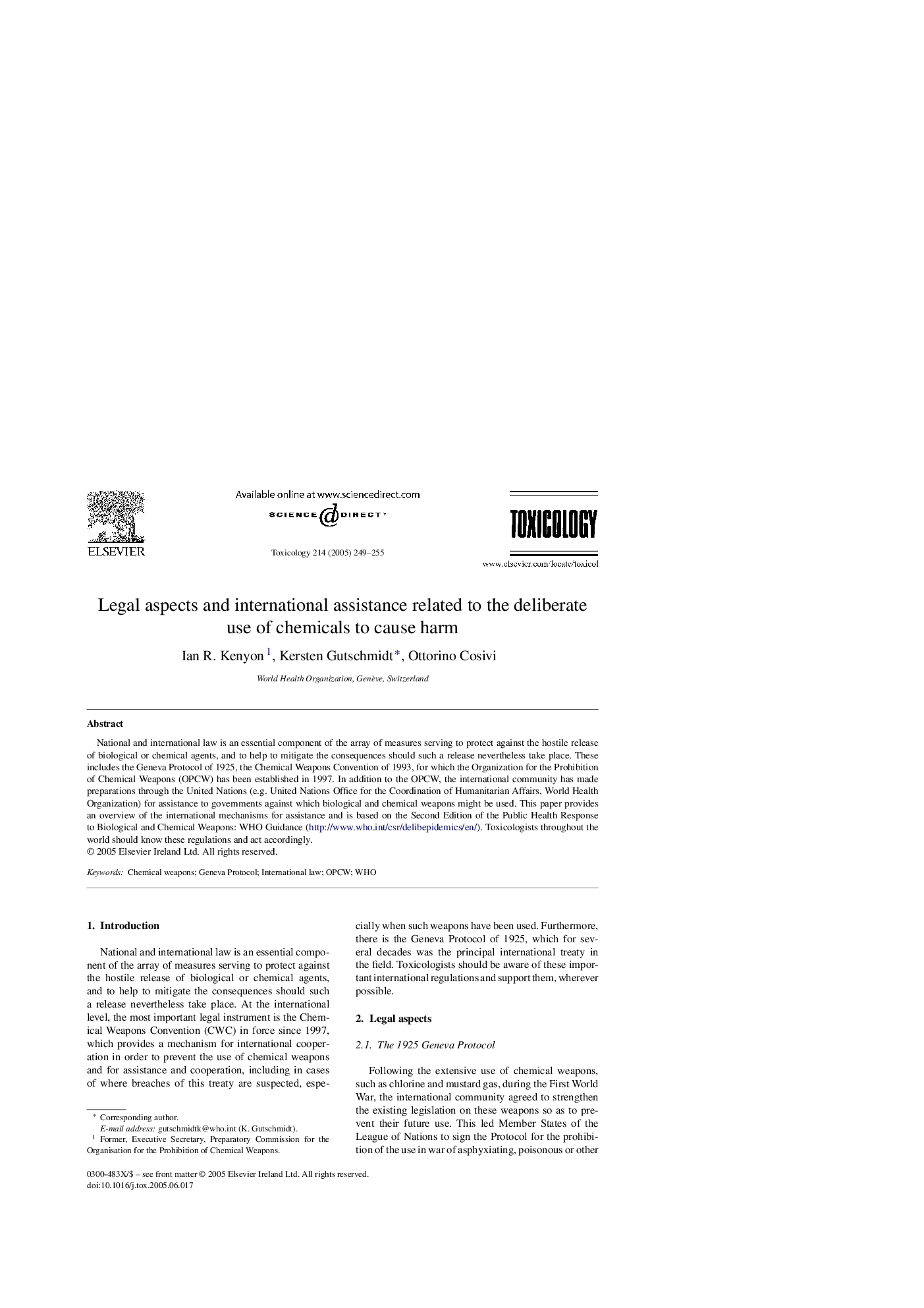| Article ID | Journal | Published Year | Pages | File Type |
|---|---|---|---|---|
| 9034810 | Toxicology | 2005 | 7 Pages |
Abstract
National and international law is an essential component of the array of measures serving to protect against the hostile release of biological or chemical agents, and to help to mitigate the consequences should such a release nevertheless take place. These includes the Geneva Protocol of 1925, the Chemical Weapons Convention of 1993, for which the Organization for the Prohibition of Chemical Weapons (OPCW) has been established in 1997. In addition to the OPCW, the international community has made preparations through the United Nations (e.g. United Nations Office for the Coordination of Humanitarian Affairs, World Health Organization) for assistance to governments against which biological and chemical weapons might be used. This paper provides an overview of the international mechanisms for assistance and is based on the Second Edition of the Public Health Response to Biological and Chemical Weapons: WHO Guidance (http://www.who.int/csr/delibepidemics/en/). Toxicologists throughout the world should know these regulations and act accordingly.
Related Topics
Life Sciences
Environmental Science
Health, Toxicology and Mutagenesis
Authors
Ian R. Kenyon, Kersten Gutschmidt, Ottorino Cosivi,
